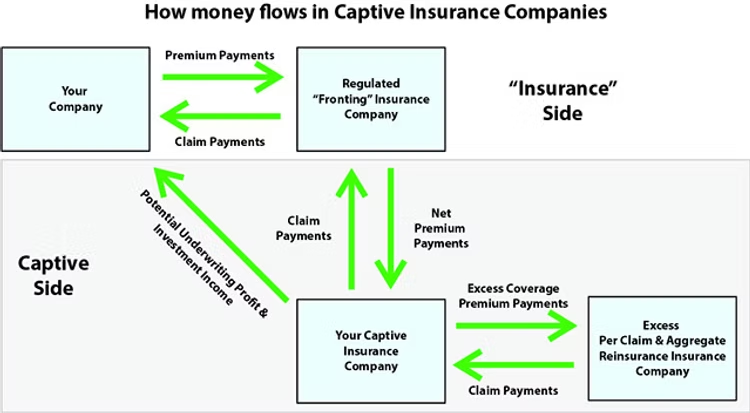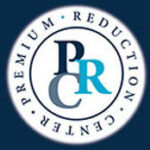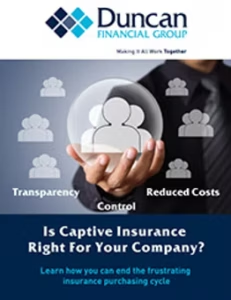Captive Basics
Captive insurance is a sophisticated risk management strategy that allows businesses to self-insure their risks while potentially reaping financial benefits. Learn how this approach can offer a middle ground between traditional guaranteed cost insurance and complete self-insurance.
Understanding Captive Insurance
Self-Insuring Your Business Risks
The key concept behind captive insurance is, in essence, self-insuring your risks. You might think that self-insurance is too much for you. But every business is basically self-insuring; it is just a matter of to what degree. Every business that buys an insurance policy has a retention that they are self-insuring, also known as a deductible.
Most businesses do not want to pay a large, unpredictable $1,000,000 claim out of their own pocket, so they purchase an insurance policy from an insurance company. Typically they would buy a Guaranteed Cost insurance policy meaning that, other than the deductible(s), they will pay no more than the premium for their insurance protection.
Many businesses that focus on reducing the likelihood of having a claim through safety and their business culture take on some risk to reduce their premiums. They may choose to keep the first $1,000, $10,000, $25,000, $50,000 or more of any claim (a deductible) and let the insurance company take on the rest. They know that the bigger amount they take on, the lower their premiums will be as most likely anything that may happen will likely be small versus catastrophic.
The concept of using a captive is like taking advantage of using larger deductibles, and captives allow you to control what you will have to ultimately pay for your insurance protection, all while reaping the benefits when you perform better than the worst-case scenario.
Just so you know the same concern over paying out huge claims applies to insurance companies as well. They do not want to take on millions of dollars in claims by themselves, so they go out and buy insurance themselves, which is called reinsurance. They keep only a portion of the potential claims, say the first $250,000 or $500,000 of a claim, and then let the reinsurance take care of the big claims. As the chance of something occurring that will bring about a claim of over $250,000 is very small, the cost of reinsurance is significantly lower as compared to the cost of insurance for the first $250,000.

The insurance companies can charge the largest amount of their premiums, and make most of their profits, from insuring these small, predictable claims and letting others (reinsurance companies) take on the large, unpredictable million dollar claims.
From the “insurance side,” a captive insurance program looks, acts and feels like a typical guaranteed cost insurance program. You purchase a standard, guaranteed cost insurance policy from and pay premiums to a regulated insurance company. The insurance company, or an approved Third Party Administrator, will pay your claims. You will be able to deduct your premium when it comes to taxes, and you will even have a year-end premium audit. No one outside of your company will know that you are an owner of a captive or that your policies are reinsured by your captive.
On the “captive side” is where things change.
Your captive enables you, individually or as part of a group, to fund and pay for those smaller, predictable claims. Therefore, the potential underwriting and investment income profits, which normally would go to the insurance company to insure poorer quality businesses and benefit their shareholders, would go to you or the group. In essence, you are able to bypass the insurance company in the traditional insurance model and access the reinsurance marketplace directly to take care of those large, unpredictable claims, thereby dramatically reducing your insurance costs.
Instead of any insurance company issuing you an insurance policy, a captive uses a “fronting” insurance company to issue the policy. The fronting company keeps a small percentage fee for the issuance of your insurance policies and dealing with any necessary regulations, state or federal filings, etc. The fronting company will then “buy” reinsurance from your captive and send it the net remaining premium. The fronting company is just what its name implies; it is the front or outward face of your insurance program.

As you can now see, your captive insurance company will really be a reinsurance company for your policies. Instead of insuring the large, unpredictable claims, you or your group insure the smaller, predictable ones and then buy your own reinsurance for the large, unpredictable claims.
Your captive insurance company will manage and pay all of the claims for you or your group. After all expenses and amounts are paid out for claims, and if your captive takes in more money than it spends, it generates an underwriting profit that may be returned to you as the owner(s) of the captive.
However, much like a regular insurance company, you do not want to have your captive pay for all of your potential claims by itself. Therefore, you must purchase reinsurance for the captive in order to limit what you may have to potentially pay out. Through the re-insurance your captive purchases, your captive insurance company will function much like high-deductible program where the captive pays for all claims up to a fixed point, such as $250,000 or $300,000. The captive will pay for claims up to that per claim amount for any single claim, and will pay for all claims to a point where the captive's aggregate deductible threshold is crosses and your reinsurance (your captive purchases from another insurance company) starts to provide excess coverage.
After one or both of these deductibles have been exceeded, the excess reinsurance that the captive purchased will pay any additional claim amounts. The excess re-insurance thereby limits how much you may have to pay out for claims in a particular year.
As the captive is an insurance company that has to pay the operating expenses, in addition to paying a premium to fund your claims, you will need to pay fees for the fronting insurance company, the captive's reinsurance company, the third-party claims administrator, and other normal operating costs of an insurance company.
Just as with traditional insurance companies, the premiums that are received by your captive are not spent right away. They need to be set aside as reserves to pay claims. While the monies are held by the captive, the funds can be invested and any proceeds are available to pay claims or be returned as profits to the captive owners. Therefore, you may receive investment income to help pay for your claims and/or be returned to you as part of the captive’s profits.
Turning Premiums Into Profits: How Captive Insurance Can Revolutionize Your Business

Captive Insurance Services
Your Single Destination for Captive Solutions
“Selling” you on using insurance captives is not what we want to do, as captives are not for everyone. Only businesses that understand and can benefit from using insurance captives should pursue using captives to finance their risks. Providing the guidance, tools, support, resources and education needed to help achieve success is the focus of the Duncan Financial Group.
In addition to guiding and supporting you through the entire captive process, Duncan provides initial and ongoing workshops and webinars on the types and structures of captive, how they work, how to gauge success, benchmarking results and key performance indicators, understanding captive financials, as well as keeping you abreast of current events that impact the captive insurance world. Having a deep understanding of the captive success factors and challenges you may face is key to improving your captive success.
Although reducing insurance costs through the lower cost structures of captives is attractive to business owners, it is important for a business owner to know if a captive is the right option for them. We will perform an analysis of your safety and risk management practices, as well as a claims analysis, to determine if the time is right for you to look at a captive. We can also determine if a group or association insurance captive, or your own single parent captive, makes the most financial sense for you to pursue.
Preliminary Financial Analysis
Entering a captive can be financially advantageous, but there is an initial cost of starting your own captive, or entering a group captive. We will review those costs as well as assess the impact of the collateral requirements on your financial picture. This includes potential impacts on cash flow, loans, or lines of credits. Our accounting and CPA professionals can review your current financials, and financial situation, and help advise you in your decision, and even make recommendations to help structure your financials before submitting for captive review.
Preparation of Captive Submission
Qualifying for a captive and establishing your premiums and reinsurance costs requires a much more extensive compilation of data about your business, your operational and claims history, and financial picture. We will walk you through this process and help gather all of the required data; we will then compile it into formats that the captive managers will want so that they can analyze your submission to join their captive.
Captive Manager/Program Selection
With over 7,000 captives, over 1,000 captive managers, and hundreds of group captives, finding or creating the right captive program and choosing the right captive manager is important for both the protection and financial success of your business and your captive. In addition to our own captive domiciled facility and captive manager, we have access to dozens of captive programs and managers that can best meet your needs.
Consultation on Captive Ownership
Understanding who should own your captive can impact who has the financial responsibility and benefit of the captive, such as receiving dividends from the captive and their taxable impact. Understanding your goals, whether business, individual, or even your estate, will need to be considered when determining who should own your captive or captive shares. Our captive experts, and accounting and CPA professionals can advise you as you make this important decision.
Ultimately, your claims will determine the success of your captive performance. Helping to minimize the cost of your claims will be crucial to reducing how much is paid out and increasing the profitability of your program. Our deep team of over a dozen seasoned claims professionals will be your advocate and work to make sure any claim is managed, settled, or even denied, in your best interest.
Safety & Risk Management
You already have a significant focus on safety and quality, otherwise you would probably not be interested in insurance captives. However, identifying risks in your business, and determining the best ways to reduce or eliminate those risks will help achieve greater captive success. Our team of over a dozen Certified Safety Professionals, Certified Risk Managers, and Certified WorkComp Advisors can help your team build and implement custom risk management programs to reduce your total cost of risk and improve your captive profitability.
Human Resources
The success of any business starts with its employees. Hiring, managing, training, and retaining the best employees are obviously critical. Our deep team of human resource specialists, including a human resources attorney, is there to support your team so they have the right information, make the right decisions, and implement the best programs.
Benchmarking Captive Performance
Just because you are in a captive, does not mean that you do not need to worry about how things are going, how things are performing. Assessing how well your captive is performing, especially in a group or association captive is critical. We will work with you to assess how well your captive cost structure is performing against the traditional marketplace, help you to understand and determine if there other members of your captive that are overly negatively affecting your results, and if the captive cost structure is appropriate.
Benchmarking Your Business’ Performance
As the cost of your captive insurance program is directly affective by your claim costs, it is important to manage your captive, not by the end results (your claims) but by a complete matrix of criteria that are leading indicators of potential problems that could lead to claims. Criteria such as injury frequency, near misses, rejected product counts, turnover, peer observation reports, and out of service vehicles, are just a few of the leading indicators with point to potential larger issues. Our deep risk management and safety professionals will help you to build the matrix of criteria to benchmark yourself against, as well as structure the means to test and measure them.
Even with insurance captives, you buy insurance to pay your unexpected claims. Since it’s common for business owners to mix business assets, property, vehicles and investments with personal ones, oversights often occur under traditional insurance arrangements. In addition to our Risk Assessment helping you to become a safer, more productive and profitable company, the assessment provides us with unique insight into your operations, and both your business and personal world. Through our Coverage Analysis, we will make sure that your business and personal insurance protection meets your needs.
Captive Audits
If you are already in a single parent captive, or group or association captive, we can perform a deep analysis of your captive and your overall safety performance. Using benchmarks, we can help you determine if the captive is actually benefiting you or not, and if there are other factors that need to be addressed to help you to improve your insurance captive performance.
Get Your Custom Risk Management Plan Today
Simply fill out the form and our team of experts will reach out to you to discuss your personalized risk management strategy.

